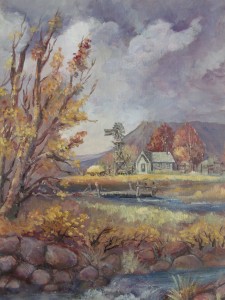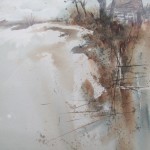For the artist, communication with nature remains the essential condition. The artist is human; himself nature; part of nature within natural space~Paul Klee

If an artist develops an attitude to the natural world of attentively having a modest view of ones own importance, feeling that, as an artist, they must return to the actual moment of creation of their subject, looking deeply into the dynamics of its structure and thus participating in it, the connection between art and nature clearly manifests itself in the finished work. The link between art and nature has always been intimate.
When Paul Cezanne contemplated natural landscape form, it led to his crucial ideas about underlying structures. This has shaped the course and influenced landscape painters for over a hundred years.

However, before Paul Cezanne and his concept of underlying structures, the impressionists painted “en plein air” (in the open air). They directed their focus not to the human being as part of nature, nor to art as a separate language, but to nature itself. Today, painting “en plein air” has resurfaced and become very popular among many artists, but Cezanne’s concepts have so permeated the art world that the good art student still steps back in humility towards nature and peers deeply into its dynamics and structure.

Although art has gone through many changes, isms and schisms, popular movements, and much much more, it still finds its way to be rooted in nature. Art by its very nature imitates nature. This is even true of the abstract and surreal artists. No matter how much they try to get away from Paul Klee’s suggestion that the artist is “part of nature within natural spaces,” the bond remains close.
As artists we can distort and exploit natural form, or attempt to tap into the unconscious or the realm of ideas as part of our quest toward originality. However, when we do, we tend to imitate (no matter how slightly) forms somewhere pre-existent in nature.
